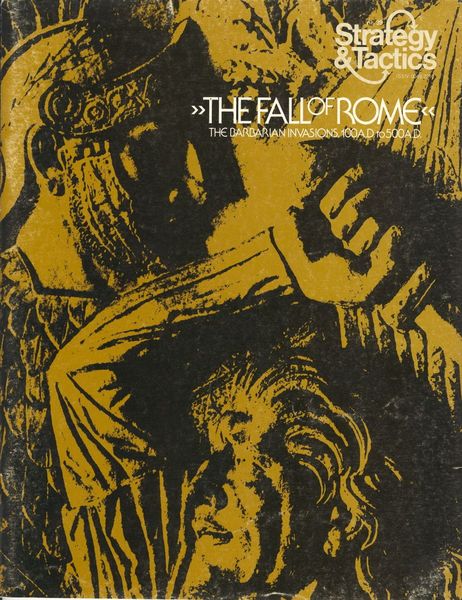The Fall of Rome (1973) Board Game
The Fall of Rome is a historical board game that simulates the decline of the Roman Empire and the struggles of various factions to gain control over the remnants of the once mighty empire. Released in 1973, the game is designed by Beth Queman, Mark Simonitch, and Redmond A. Simonsen, and features artwork by Decision Games, Hobby Japan, and SPI (Simulations Publications, Inc.). The game is set in the ancient world and is categorized as a wargame, focusing on area majority/influence, area movement, dice rolling, movement points, and combat results table mechanics.
Game Components of The Fall of Rome
How To Setup The Fall of Rome
To set up the game, the player must first place the hex grid map on a flat surface. The Roman legions and barbarian hordes are then positioned according to the specific scenario being played. The rulebook provides detailed instructions for each scenario, ensuring the correct placement of counters and the initialization of game state.
Gameplay Mechanics and Game Objective
Player Experience
Playing The Fall of Rome can be a complex and challenging experience. The game requires strategic planning and management of resources, as the player must balance defense against multiple barbarian threats. However, the game has been criticized for its complicated rules, which can make it difficult to learn and enjoy.
Pros
Cons
Personal Thoughts on The Fall of Rome
The Fall of Rome is ideal for wargame enthusiasts and history buffs who enjoy solo play and are willing to navigate complex rules. While it offers deep strategic gameplay and historical accuracy, it may not be the best choice for casual gamers or those seeking a more streamlined experience. Despite its challenges, the game remains a fascinating and educational experience for those interested in the fall of the Roman Empire.
We are supported by our audience. When you purchase through links on our site, we may earn an affiliate commission, at no extra cost for you. Learn more.

